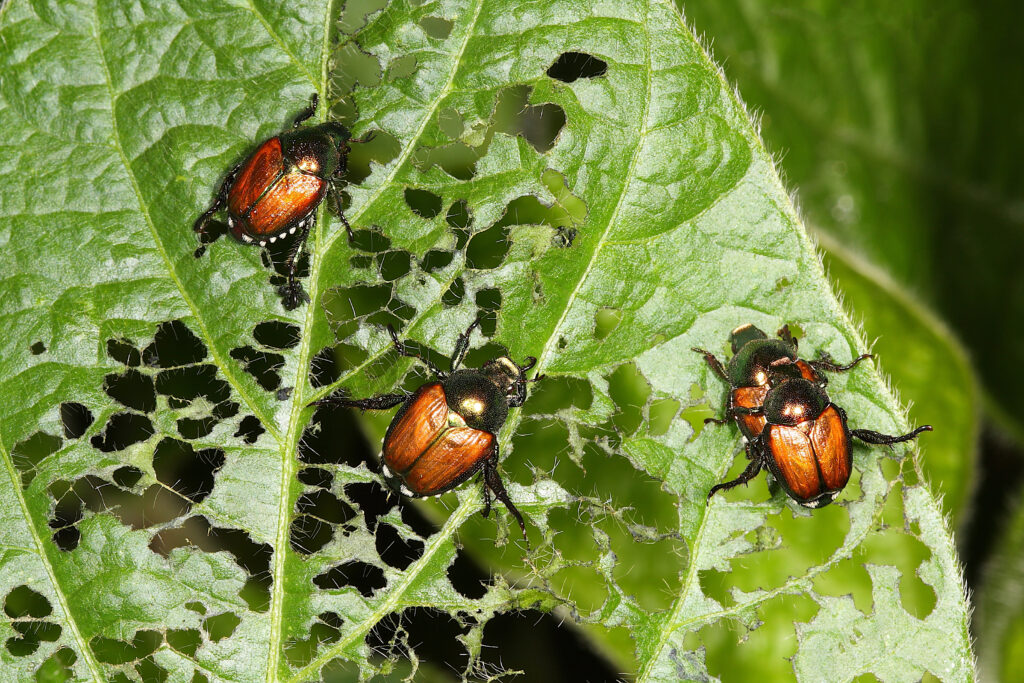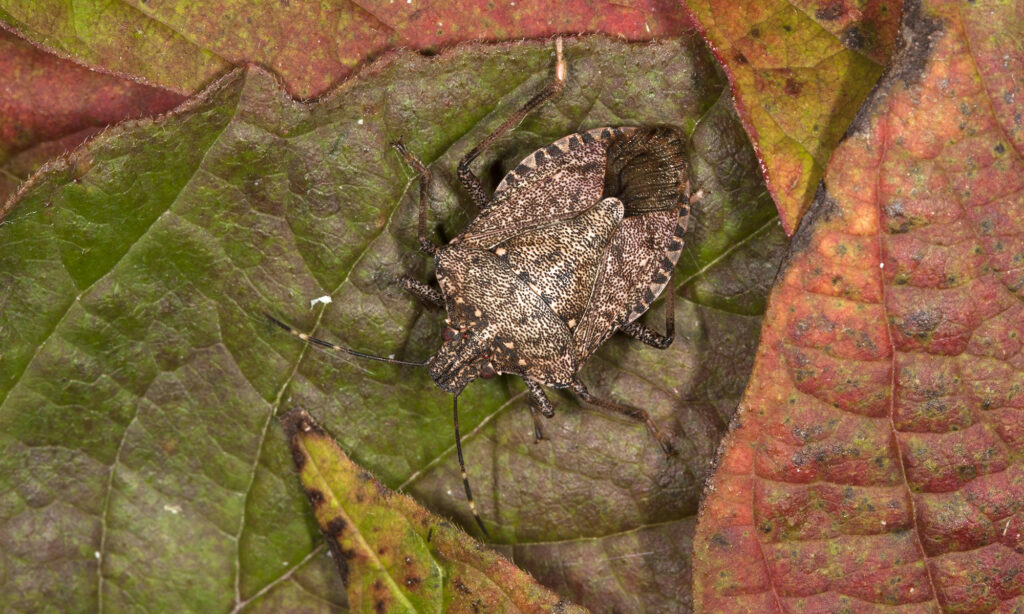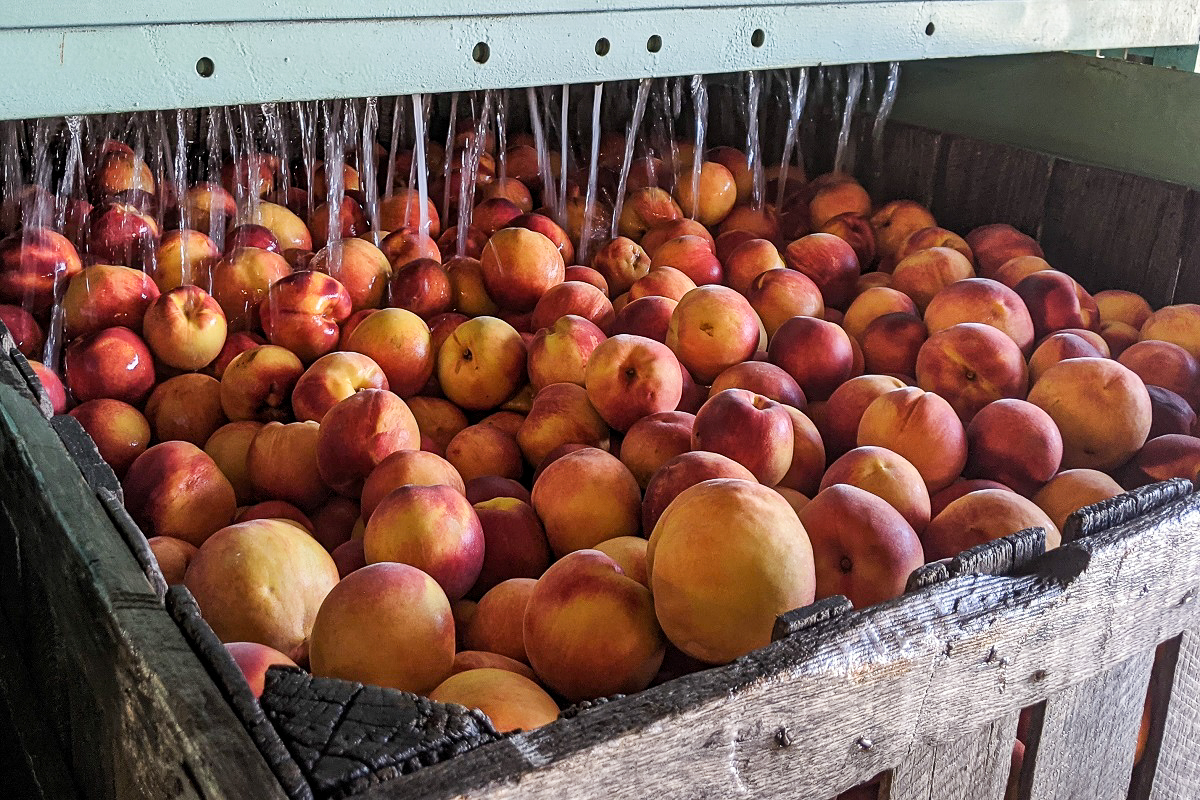Cultivating Innovation
The Intersection of Geography, Climate, and Agricultural Research in Illinois
Stretching approximately 400 miles from north to south, much of Illinois is composed of some of the most fertile soils in the world. Illinois ranks third in the nation for its total acreage of prime farmland, with a staggering 89% of its cropland earning this designation, concentrated mainly in the central three-fourths of the state. Illinois’ modern agricultural landscape has evolved from a long-term trajectory shaped by glacial legacies, resulting in a critical zone that supports a highly productive landscape.
Since its inception in 2008, the Prairie Research Institute has conducted long-term monitoring of Illinois’ water, soil, and climate. These data, including growing and pest degree days, soil temperature and moisture, water table levels, and in-stream sediment, are used every day by thousands of Illinoisans and by the state’s agriculture, renewable energy, and construction industries. This monitoring is particularly vital given the challenges posed by modern, high-intensity farming methods. Such practices often involve extensive use of energy for machinery and chemical production, leading to soil quality decline and excessive nutrients in water bodies, harming ecosystems.
The USDA, U.S. Geological Survey, U.S. Army Corps of Engineers, and the Illinois Drought Response Task Force use PRI data for research program support and long-term planning, and the National Weather Service uses the data to assist in forecasting and tracking severe weather.
PRI researchers have studied issues that are vital to the agricultural industry, providing data and tools that benefit farmers while also tackling environmental and waste challenges that support the broader community. Research suggests that intensive farming has shifted the way agriculture affects the land. Historically, farming was focused on slowly transforming the land, allowing water, carbon, and nutrients to cycle naturally. However, modern farming focuses on quickly moving these elements across the land, which can be harmful. This shift underlines the importance of PRI’s data in helping farmers adjust their methods to be more sustainable and less harmful to the environment.
Data harvest: How Illinois State Water Survey’s data-rich Resources Shape the future of Farming
Information on weather, water, and soil conditions essential for farmers before, during, and after the growing season is available for free through the Water and Atmospheric Resources Monitoring program (WARM) at the Illinois State Water Survey (ISWS). The WARM program has been collecting data since the 1950s, and much of the program’s data for the state are not freely available anywhere else, said Jennie Atkins, WARM director.
WARM’s Illinois Climate Network (ICN), with its 19 weather stations across Illinois, has collected data since 1989 on air temperature, relative humidity, precipitation, barometric pressure, and solar radiation at five-minute intervals; soil temperature and moisture at hourly intervals; and has calculated potential evapotranspiration, dew point, degree days, and, at select stations, temperature inversions. The Shallow Groundwater Wells network monitors short-term fluctuations and assesses long-term trends in the state’s water tables.
This wide range of information provides users with a more complete picture of conditions at each location. Most data are available on the WARM program website, with all others available upon request.
Of the more than 10,000 registered users of the WARM website, one-third are part of the agriculture industry. Soil temperature data are the most popular with this group, particularly in the spring and fall.
WARM also provides two agricultural insect pest degree day calculators, one for commodity crop growers and one for specialty crop growers, and a calculator for crop growing degree days. The pest degree day tool, which was updated and improved in 2021, can be used to track the development of insect pests using data from the ICN.
The local seven-day forecast, based on National Weather Service forecasts, is also used so farmers know what to expect and to zero in on the potential progression of insect life stages while also determining when crops will be the most vulnerable.
Seasonal maps of the Japanese beetle, brown marmorated stinkbug, and corn flea beetle are available on the WARM website.


“The pest list was updated and expanded because the climate and soil conditions are changing, the pests that farmers are dealing with are changing, and the way that farmers are dealing with them is changing,” Atkins said.
Half of the ICN stations now collect data on temperature inversions, in which cooler air is above the ground and warmer air is on top. Air pollution can become trapped closer to the ground instead of dispersing. For this reason, chemical applicators are discouraged from spreading pesticides during a temperature inversion. This information can be found here.
Information on the WARM website is free, but registration is required. WARM is funded through ISWS, the National Weather Service, the U.S. Department of Agriculture, and other agencies.
Farmers can find additional weather and climate data, maps, and information on the Illinois State Climatologist website. The State Climatologist’s Office is at ISWS.
NTrack app transforms sustainable farming practices using real-time data
Heavy spring rains may wash away fertilizer applied to corn early in the season, so farmers often apply more fertilizer mid-season to compensate. Climate change increases their uncertainty as severe storms occur more frequently. An atmospheric scientist at ISWS is perfecting his online and Android app decision-support tool that helps farmers schedule applications based on real-time nitrogen availability in local soils.
With hourly local weather data from the National Weather Service and soil data from the U.S. Department of Agriculture soil database, the NTrack tool simulates corn growth, crop nitrogen uptake, and nitrogen losses. Users of the tool provide some crop management inputs, including their location, corn cultivar being used, planting date, and previous fertilizer application date.
Farmers then receive an email with a time series of soil nitrogen concentrations at two depths, 0 to 1 and 1 to 2 feet, over the requested period. The results include a graph of soil nitrogen availability as it changes during the simulation period.
The online tool, available at http://rsetserver.sws.uiuc.edu/ntrack/, can provide timely information, helping farmers to better understand how changing weather conditions and crop management practices affect soil nitrogen availability, and informing management decisions on whether to apply additional nitrogen during the growing season.
Tracking the rise of agricultural pests
Each year, farmers want to know what insect pests they can expect to find in their fields. An insect survey program at the Illinois Natural History Survey (INHS) is designed to spot the pests that could affect yields. Funded by a U.S. Department of Agriculture grant, this long-term program involves volunteers who monitor traps in fields in the spring and report results.
For two weeks in July, the focus turns to pest surveying in 40 to 50 Illinois counties. Field sweeping and visual monitoring are used to estimate pest populations during the growing season and help growers make pest management decisions.
Some insects, such as the corn earworm and corn borer, are not as economically important as they were in the past because of different management strategies with transgenic hybrids. Yet they are monitored for non-GMO growers in the state who still have an interest in these species.
Some of the most important pests surveyed in the summer include corn rootworms, Japanese beetles, grasshoppers, and stink bugs. Populations vary every year because of climate and weather conditions, spraying patterns, and other factors. Estes maintains the population data and determines trends. The survey also provides valuable information on emerging pests in corn and soybeans.
As part of the program, Estes works with scientists at the University of Illinois Crop Sciences Department and with the ISWS WARM program, providing a pest degree-day calculator that uses weather forecasts to note accumulated degree days for anticipating insect behavior for some of the most important pests. Insect maps for the stinkbug, Japanese beetle, and corn flea beetle are available on the ISWS WARM website.
Estes is also coordinator of the Illinois Cooperative Agriculture Pest Survey program which involves surveying for invasive pests that have not been found in Illinois.
Western corn rootworm. Photo by Joseph L. Spencer, INHS.
Rootworm resistance: Unveiling strategies for sustainable pest control
Northern and western corn rootworms have evolved resistance to annual crop rotation, insecticides, and the bacterial toxins engineered into Bt corn hybrids. Because of the importance of controlling the pests, nearly any novel question about corn rootworm habits is worthy of investigation, according to Joseph Spencer, INHS insect behaviorist.
In the lab and the field, Spencer has been studying the biology, ecology, behavior, and resistance of corn rootworms for over 25 years in a bid to find ways to control the pest.
Before Bt corn was available, the corn-soybean crop rotation was key for corn rootworm control. This practice took advantage of rootworm reliance on cornfields for egg laying. Unfortunately, broadscale adoption of crop rotation selected for a change in the movement patterns of female beetles, leading to egg laying in soybean fields and resulting in behavioral resistance to crop rotation. Corn rootworms are laying eggs in soybean fields so that when the larvae hatch, the crop will have been rotated to corn.
Now that the insects are becoming resistant to Bt corn, the study of insect movement in and out of cornfields is relevant again in understanding rotation resistance, Spencer said. This time the concern is about where beetle mating is occurring, whether Bt-susceptible beetles ever mate with resistant beetles, and how movement spreads resistance.
In previous studies of rotation-resistant populations, Spencer and colleagues collected feeding female western corn rootworm beetles from soybeans and cornfields to study the effects of the two diets. As expected, the soybean-feeding beetles died sooner than beetles feeding on a corn diet. However, they found the ill effects of a soybean diet could be minimized if beetles later flew back to cornfields to eat corn tissues.
More recent findings showed that beetles fed soybean tissue were more active and more likely to take flight than the corn-fed beetles. Rotation-resistant beetles have also developed soybean-adapted gut microbiota and physiological adaptations so they can stay in soybeans for longer periods before suffering ill effects.

Spencer has also been tracking the evolution of the insect’s resistance to Bt corn and studying the efficacy of RNA interference, which is the latest tactic targeting rootworm larvae feeding on corn roots. In an ongoing project, Spencer works with Kelly Estes, director of the Illinois Cooperative Agricultural Pest Survey program, to assess insect population levels and the spread of resistance.
“When you have huge, variable populations of insects across the state and you apply a limited number of strategies over a vast area, inevitably, natural selection rears its ugly head and you get resistance,” he said. “Any time we think we have them licked, that’s a sure sign we’re about to take a fall.”
Corn rootworm movement and flight studies inform insect control. Spencer found that recently mated rotation-resistant female insects fly to nearby soybean fields to lay their eggs, but males stay behind in the cornfields to seek out mates.
Spencer’s studies and those of colleagues have influenced the way that insects are managed and how Bt corn is deployed in fields. In his most recent project, Spencer is looking at using a combination of innovative techniques, such as applying entomopathogenic nematodes to prey on corn rootworm larvae and make pest abundance monitoring less burdensome by exploring the use of aerial drones to count insects on far-flung sticky traps in experimental fields, along with Bt corn hybrids, to provide sustainable control.
Visit Spencer’s University of Illinois profile to view a list of his selected publications.
From fields to faucets: Groundbreaking soil contaminants research paves the way for innovative solutions
Applications of organic wastes, including biosolids and effluents from sewage treatment plants, benefit crop production in Illinois, boosting yields and profits and diverting waste from landfills. On the downside, chemicals of environmental concern (CECs) such as pharmaceutical and personal care products (PPCPs), and per- and polyfluoroalkyl substances (PFAS) from sewage wastes are known to leach into groundwater and may be taken up by plants.
At the Illinois Sustainable Technology Center (ISTC), scientist Wei Zheng has examined the pathways of these CEC contaminants in soils for 15 years and has found innovative solutions to mitigate the problem.
ISTC field studies have shown that PPCPs may degrade in soils, latch onto soil particles, or run off or leach into surface and groundwater. Continued and long-term application of PPCP-containing biosolids, animal wastes, and wastewater effluents may increase their concentration levels in plants.
In a summary of the literature published in “Current Pollution Reports” in 2021, Zheng found that the factors that have the greatest effect on PPCP transfer are the properties of the PPCPs themselves and soils as well as plant species. Plants grown in sandy soils have higher levels of PPCPs than those grown in high organic matter and clay soils. For certain PPCPs that are degraded in soils, the process breaks down the original compound into metabolites that may be more toxic and mobile.
In a recent study published in Science of the Total Environment in 2023, Zheng and colleagues investigated the adsorption of the diabetes drug sitagliptin in soils treated with sewage wastewater. Sitagliptin is frequently detected in sewage effluent and the environment because it does not fully degrade during the wastewater treatment process. Lagoon-based sewage treatment systems in rural areas also remove fewer contaminants than typical municipal wastewater treatment facilities, so contaminant concentrations in sewage are higher.
Study findings showed that biosolids, which are treated sewage sludge that has a large amount of organic matter, bonded with sitagliptin in soils and reduced its adsorption. Results also showed that increasing the amount of sewage effluent used for soil amendment reduced the adsorption of sitagliptin in soils.
The results of this study can be used to predict how other PPCPs are transported and adsorbed on agricultural soils and develop management strategies to reduce the risks of using sewage wastes in rural areas.
At ISTC, Zheng and colleagues are also studying several technologies to remove PPCPs, either before they reach the soils or after sewage waste application.
In the current project, Zheng is studying the feasibility of using inexpensive oils to capture hydrophobic PPCPs from wastewater effluents. The treatment, which would be used at water treatment plants, is especially inexpensive when applying used cooking oils, such as those from restaurants.
One advantage of this process is that oils remove PPCPs from rural sewage water while leaving behind the nutrients that fertilize crops. After capturing PPCPs, the spent oils can be used as fuel for diesel engines. The process can eliminate the captured contaminants.
In addition, carbon-rich designer biochar that Zheng has produced from forest and agricultural residues is used as a filter to absorb PPCPs from sewage water. Also, biochar can be directly applied to soils as a soil amendment.
This line of investigation not only improves the scientific understanding of fate and transport of CEC contaminants in water-soil-plant systems, but also fosters the development of effective and feasible practices to mitigate CEC contamination in the environment. The results are useful to diminish the negative impacts related to organic waste application in agricultural fields, thereby enhancing soil health, protecting water, and increasing our food security and safety.

Harvesting hope: How the Farm to Food Bank Program is bridging the gap between surplus crops and food insecurity
While surplus produce often goes to waste in the fields, more than 1 million Illinoisans face food insecurity. The newly established Farm to Food Bank Program in Illinois helps farmers donate produce to local food banks. An ongoing three-year ISTC effort, which includes a feasibility study and pilot projects, has proven that the program can be successful.
ISTC staff visited eight food banks to learn about any existing relationships with local farmers and interviewed organization personnel who manage similar programs in 14 other states. In partnership with the Illinois Farm Bureau and the Illinois Specialty Growers Association, they also surveyed and conducted focus groups with Illinois farmers.
Over 60 percent of farmers surveyed were interested in finding new markets for some or all their commodities. The barriers to donating or selling food to food banks were primarily packing and labor expenses, storage, and transportation.
ISTC’s six pilot projects resulted in donations of nearly 2.5 million pounds of produce that would have otherwise gone to waste, yielding nearly 990,000 meals. Feeding Illinois received a grant from the U.S. Department of Agriculture providing $611,000 to reimburse farmers for some of their expenses in donating produce.
“We learned from our focus groups that farmers want to donate their surplus food, but that it should not be a burden on them financially to pick produce, package it, and deliver it to food banks,” Samaras said. “This program provides a safety net for farmers so they can grow a few extra acres for their primary markets, knowing that if they don’t sell everything, there is a program that can help them recoup some costs and make sure that the food is going to end up on someone’s plate.”
The newly signed law will invest $2 million to support already strained food banks and the farmers who donate food. The law also provides grants for capital improvements to transport and store food for underserved communities, which often lack the resources for residents to obtain fresh fruits and vegetables.
Links for more information about the feasibility study, Farm to Food Bank survey results, pilot projects, and a 2022 summary report are available on the ISTC Technical Assistance Program website.